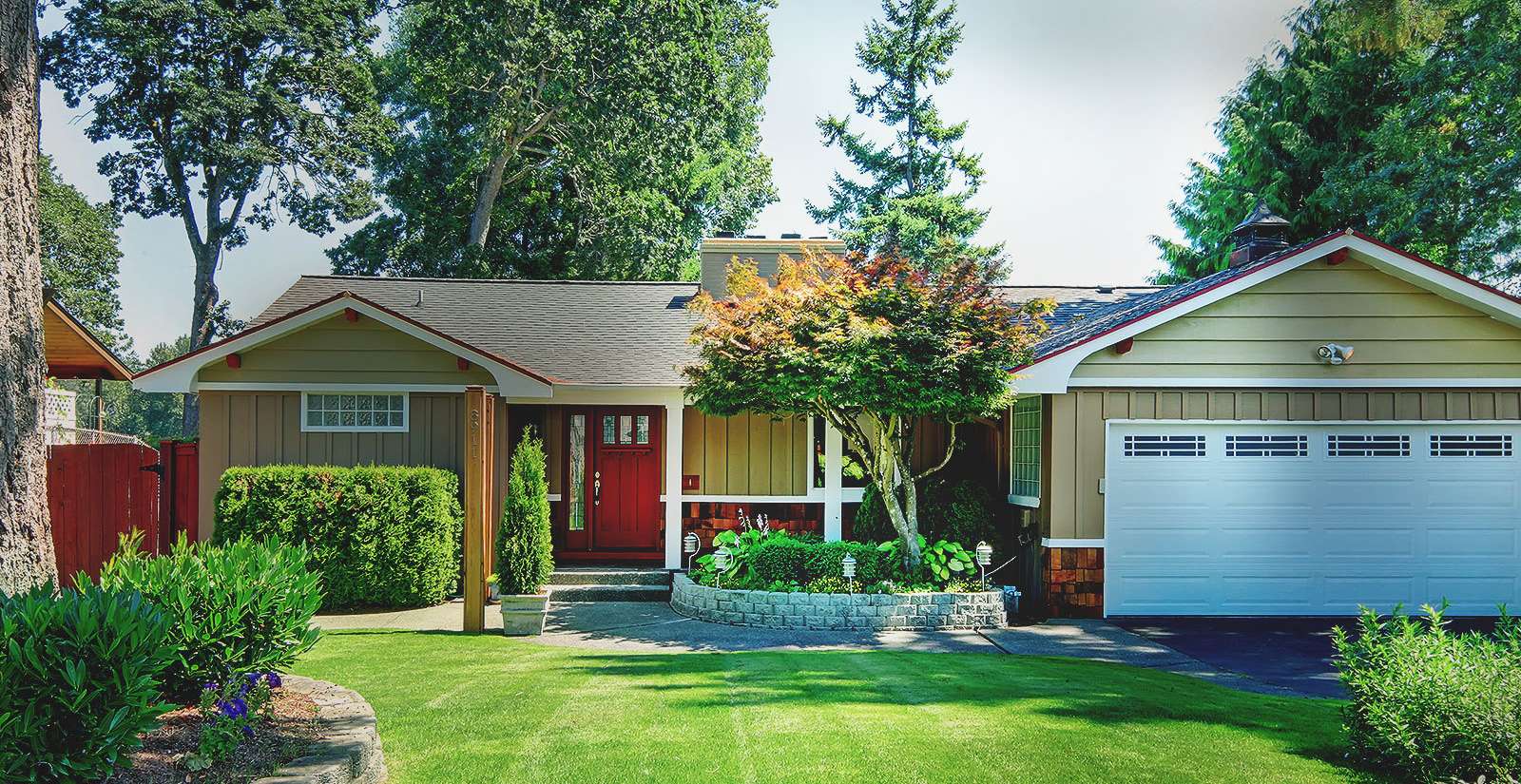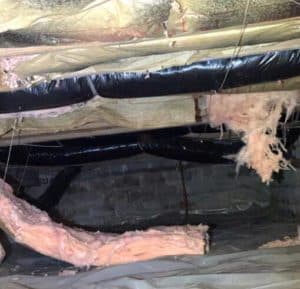10 Ways to Keep Your Home Cool This Summer

Here in the Midwest, we often say our weather is unpredictable. I don’t think that’s entirely true. The amount of rainfall varies, and some tornado seasons are more active than others. But you can pretty much guarantee that our summers are going to be hot and humid.
Started in 1996, Acculevel is a family-owned and operated company that specializes in foundation repairs and waterproofing. We focus on helping homeowners protect and preserve their greatest investment. Our mission is to help you keep your home as healthy and energy-efficient as possible with whole-home solutions that address your concerns and increase your home’s value.
Staying cool and comfortable in the hot summer months is a challenge. And while your comfort is of great importance to you, it can sometimes conflict with your financial goals. Energy costs can bust your budget during a heat wave, and running air conditioners is never cheap.
Let’s explore ten simple ways you can keep your house cool this summer — while maximizing the energy efficiency of your air conditioner.
How to Keep Your Home Cool: Start with Your HVAC Unit
We’re going to start with the HVAC unit itself, then move outward to consider how various components and sections of your home affect its performance.
1. Preventative maintenance.
When was the last time you scheduled a maintenance call for your HVAC system? Just as cars need oil changes and tune-ups, other major pieces of machinery need periodic “check-ups.” During these preventative maintenance appointments, the technician will clean, lubricate, and make adjustments to keep the AC unit in its best condition.
If your air conditioner has been running excessively with limited effect:
- It may need to be charged.
- It could be damaged or past its prime.
- It may not be the correct size for your home’s square footage. Has your basement been finished, or have you added another room since the original installation?
We understand that buying a new HVAC system is a major investment. But using one that is too small or malfunctioning will send your utility bills sky-high. If you need to buy a new HVAC, make sure you check on the possible tax credits available to homeowners.
2. Regular Maintenance
Your HVAC filter needs to be changed regularly. Buy the highest quality filter you can for your appliance. It may cost a little more, but higher-rated filters block more pollen and debris. This provides the cleanest and healthiest air for you and your family while also reducing the “gunk” that can build up in your air conditioner.
3. Check Your Vents And Fans
Go through each room in your home, and assess the vents. Dust or wipe them down, and check that they are opened or closed as you need. This is also a good way to ensure that they aren’t blocked by toys, window decor, or furniture. If you have to place furniture over an open vent, use a vent deflector to redirect the air out from under it.
If your house has light fixtures with ceiling fans installed, use them when the room is occupied. A fan will use a bit of energy, yes —but it can be a game changer if a room is bordering on uncomfortable. If you have an open floor plan, operating a ceiling fan in more than one area is ideal. This can create a cross breeze that helps keep your home cooler with less effort from your HVAC unit. A cool breeze can be enough to bump up the temperature setting on your thermostat by a degree or two.
4. Change the Thermostat
While we’re discussing your temperature settings: have you installed a programmable thermostat in your home yet? If so, are you using the program feature? If not, you’re missing out on a key opportunity to manage your home’s temperature, reduce the wear and tear on your air conditioner, and lower your utility bill —And it can likewise help you control heating costs in the winter, too!
That’s a lot of benefit from a small investment. For example, if there’s no one at home in the afternoons, you don’t need to maintain the optimum temperature. Program the thermostat to go up a few degrees when everyone is out of the house — but not too far! You want to schedule the temperature drops for when you and your loved ones return in the evening, but you don’t want it to be more than 3 or 4 degrees. A more extreme temperature shift makes your air conditioner run harder to keep your house cool.
This is also why we don’t recommend you turn your HVAC off and open the windows when no one is home. In addition to being a home security risk, letting in all that hot and humid air wastes all the energy (and expense) you’ve put into getting your home cool the night before. It also strains the HVAC to dramatically reduce it again when you return home.
5. Install a Whole-Home Dehumidifier
If you don’t have a whole-home dehumidifier installed, you should invest in one. A quality dehumidifier will maintain a healthy RHL (relative humidity level) of 50%. This is the optimal level because it won’t support bacterial growth, viruses, fungi, or allergens. If you or someone in your home has severe allergies, asthma, or upper respiratory issues, a dehumidifier can make a real difference in their ability to breathe.

Information taken from a study performed by ASHRAE (the American Society of Heating, Refrigerating and Air-Conditioning Engineers.)
A dehumidifier comes with other benefits for your air conditioner, also. Air with less moisture is easier to cool and allows your air conditioner to circulate cooler air more efficiently. Dry air is also cooler air because the humidity is what adds the clammy feeling to the summer heat. This reduced discomfort may allow you to shave a degree or two off the overall temperature of your home and still feel comfortable.
6. Install Blinds or Curtains
It may sound like a small adjustment, but keeping your windows covered can make a dramatic difference. Think of your window coverings like decorative insulation; they reflect the heat that can easily increase the temperature of a well-lit room. You may even want to install insulated or blackout curtains in the rooms that get the most sunlight during the hottest part of the day.
If you have pets who look out the windows or like to snooze in the sunbeams, don’t despair! Try lowering the blinds most of the way and leaving a gap above the sill for Fido to surveil his kingdom for intruding squirrels. You could also tie back the curtain in the preferred window seat, allowing Fluffy a dose of that coveted sunbeam without leaving the entire window exposed. Yes, these are compromises. But these options will fail completely if your furry companions destroy the very things keeping your windows closed against the summer heat!
7. Assess Your Home’s Insulation
Check around doors and windows for drafts of hot air. Repair any damaged trim or replace caulking to seal gaps. Evaluate the insulation in your attic and crawl space. Is it clean, dry, and in good shape? This is a great opportunity to check for water leaks, pest intrusions, or other signs of trouble in areas you don’t usually see.
Catching a problem when it’s still developing is less expensive to repair and can save you other forms of discomfort. Often, by the time mold or biological growth has reached a stage that you can smell, you’ve been enduring its effects for weeks or months. Anyone with a weakened immune system, respiratory issues, or allergies will be suffering from the effects.
One of the most common culprits in a home is fiberglass insulation in your crawl space. This insulation type absorbs moisture, provides an ideal environment for both mold and pests, and will eventually collapse. We strongly encourage homeowners to replace it with spray foam, which is inorganic, waterproof, and much better suited to a crawl space.

This photo was taken by an Acculevel project advisor during a free estimate appointment. The fiberglass insulation has gotten wet, began molding, and is actively falling out of place.
8. Cover the Floor in Your Crawl Space
While you’re inspecting your crawl space, take a good look at the “floor.” Your crawl space is probably open to the ground underneath your home. Hopefully, the dirt isn’t exposed; there should be a liner placed over it. This liner is called a vapor barrier, and it blocks moisture and odors from entering your crawl space.
If the liner is damaged, or you have a lot of moisture (or even water!) in the crawl space, this should be corrected as soon as possible. Moisture will cause damage to your foundation, create sagging floors, and harm the air quality of your home. Waterproofing, a dehumidifier, or even encapsulation may be needed to protect your home and your family’s health. This repair method seals your crawl space against outside intrusions and creates a clean and dry space inside.
9. Schedule Large Appliance Usage
You know, your oven gives off a lot of heat when you use it. But other kitchen appliances do this, too. Try to delay running the clothes dryer or dishwasher until the evening hours, when cooler air is more likely. This helps keep your house cool and can save you money! First, it limits how much heat you generate, which impacts the wear and tear on your air conditioner. And second, by scheduling your appliances to reduce unnecessary heat, you can lower your electric usage.
10. Prepare Meals with Minimum Heat
No, I’m not going to tell you to eat salads all summer! But try to make the most of those smaller countertop appliances you have. Prepare meals in slow cookers, air fryers, or even toaster ovens. Smaller appliances cook more efficiently with less heat than your full-size oven.
You can also take advantage of clear skies and fresh evening air and fire up your grill. If you’re feeling particularly outdoorsy, use a fire pit or small bonfire and roast foil pack meals in the coals. Have kids who want to get involved? Roast hot dogs (or make s’mores!) over the flames.
The Next Step
If you’ve found problems in your home while taking any of these steps, you should take prompt action. Home repairs do not get cheaper with procrastination! In fact, putting off repairs usually makes the problems worse and the solutions more expensive.
Does the idea of hiring a repair company make you anxious? We’ve all heard horror stories from people cheated by scammers; those are what led to the development of this guide: questions to ask a contractor. This article provides questions, examples of good and bad answers, and why it is important to ask. We want homeowners to be confident in their decision to choose a contractor and to not be deceived or taken in by poor business practices.
If you need waterproofing or foundation repairs, contact Acculevel. One of our friendly call center representatives will schedule an appointment for you with a knowledgeable project advisor. Our team will evaluate your home, the symptoms you’ve experienced, and recommend the best course of action for you to keep your home strong and healthy for years to come.
Acculevel treats every customer’s home as if it is our own. Allowing our employees into your home demonstrates trust, and we intend to repay that trust with the absolute best in customer service. We are accredited by the Better Business Bureau, have an A+ rating, and average 5 stars on customer reviews on both the BBB website and Google.
Ready to get started tackling your home issues? Get in touch with the Acculevel team today!